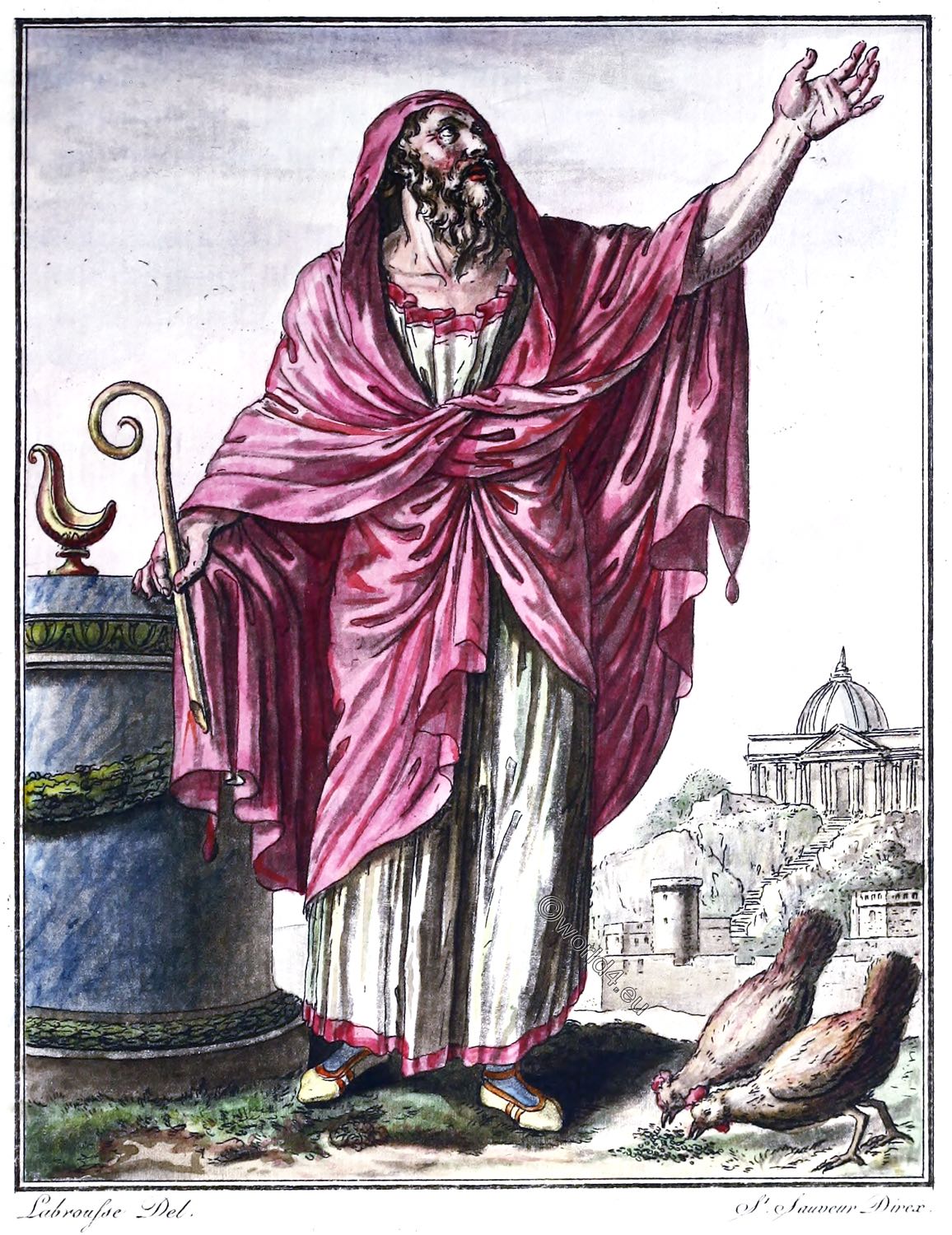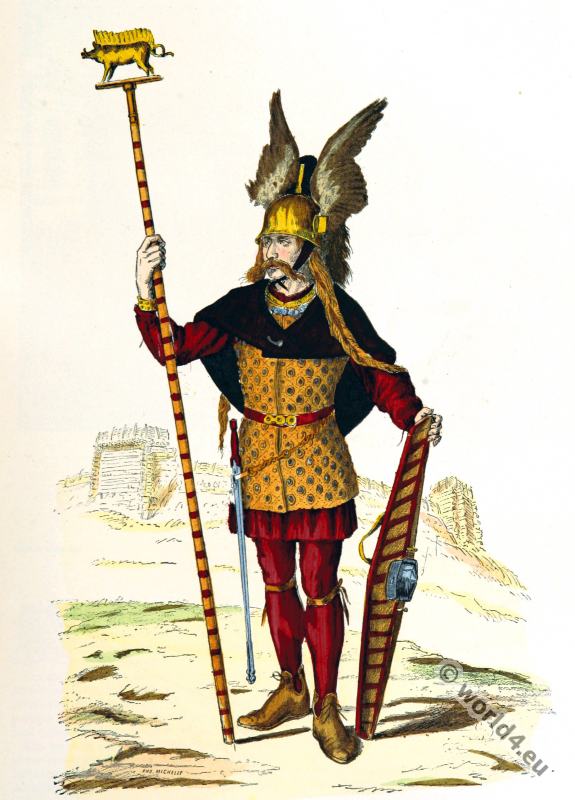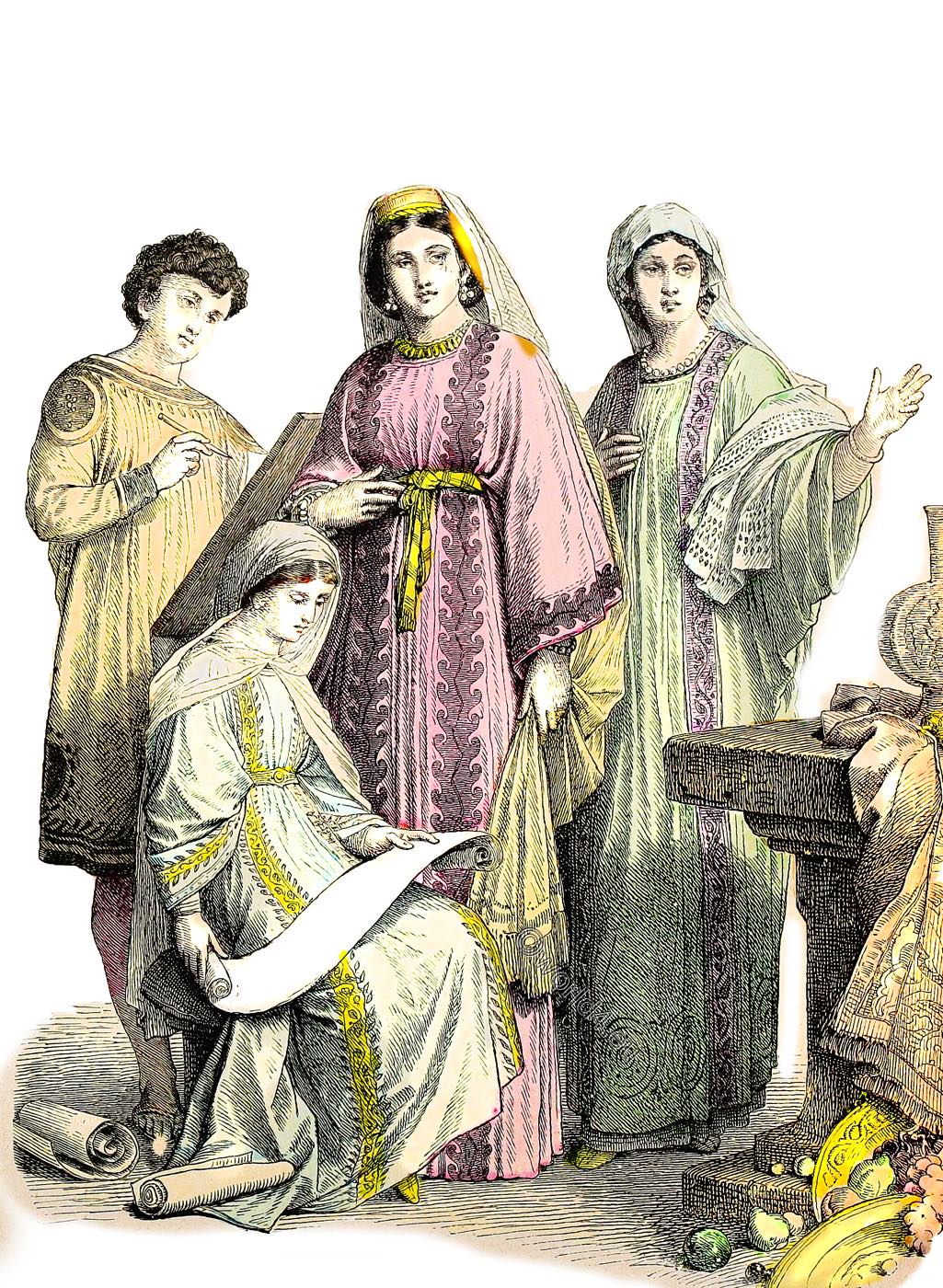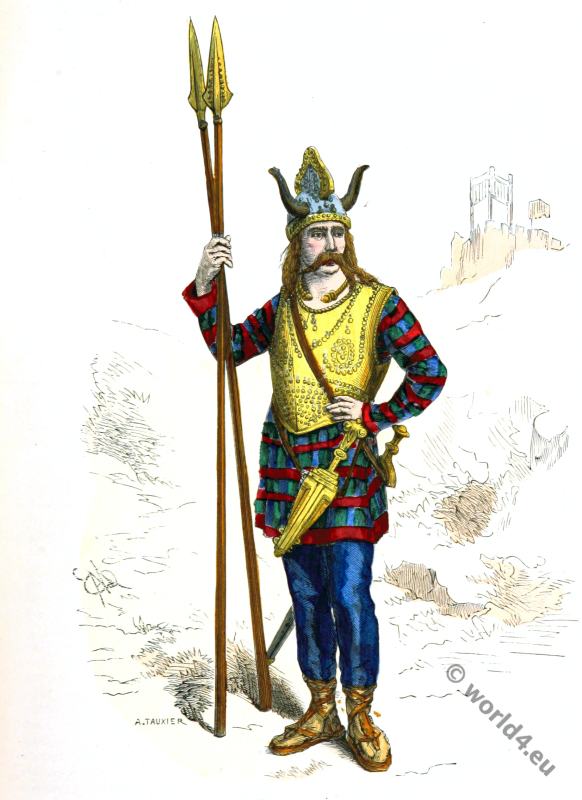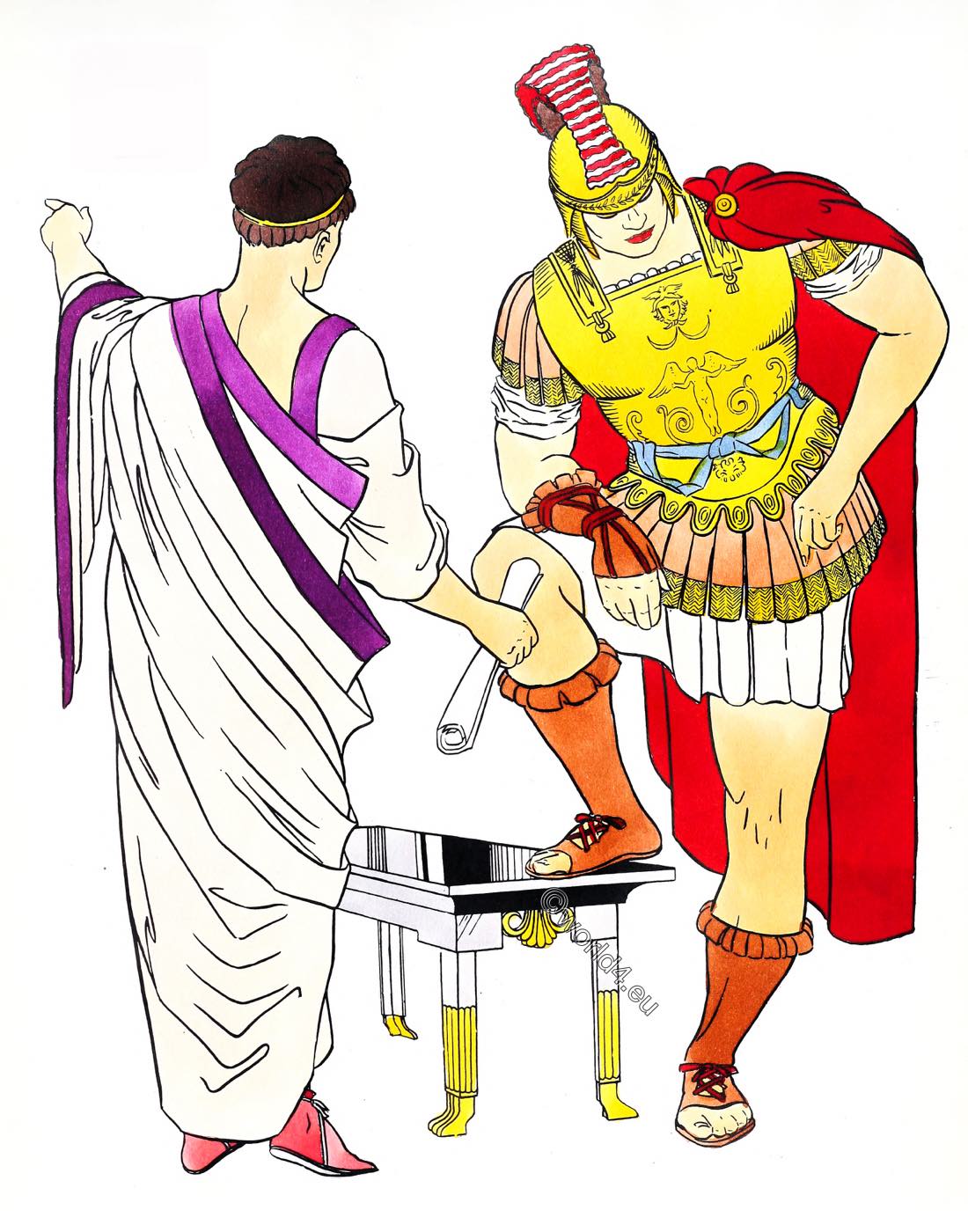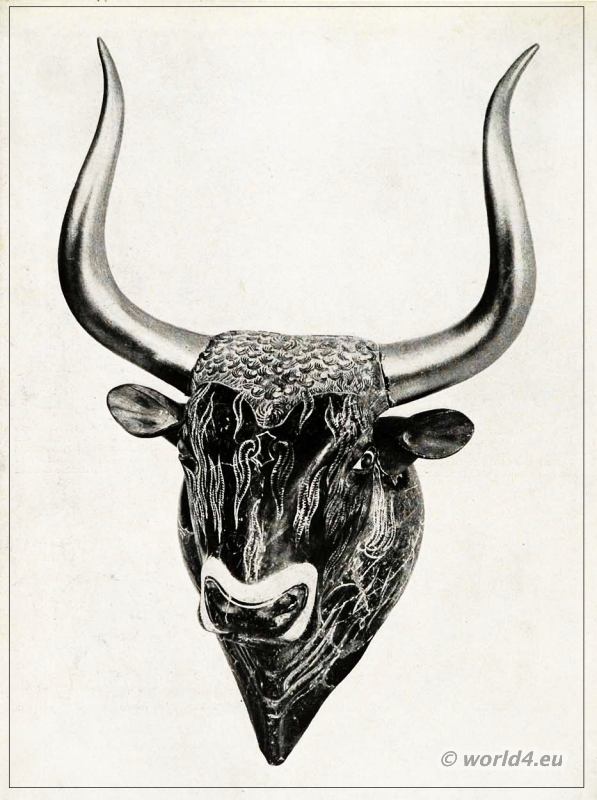
EARLY ROMAN — THE EARLY TOGA. 700 BC. – 500 BC.
The early days of Rome presented a confused picture of Greek, Etruscan, and Latin influences. In our pictorial history of costume it is deemed advisable to omit that concerning ‘which we cannot be certain and to begin the Roman period with garments that were almost purely Roman. Even so, it is impossible to eliminate the Greek influence since it was present in every phase of Roman life.
However, in the opinion of most authorities, the early toga shown on the man owes no allegiance to Greece. It is a most interesting garment, which varied greatly in dimension and style of draping during the Roman era. This earliest model is probably the shortest and widest example of the semicircular or half-moon-shaped togas. (See Plate 14.) Not more than sixteen and one-half feet long on the straight edge and about six and one-half feet wide, it is distinct from the later model on Plate 14 in that the decorated band of color is on the curved edge instead of the straight. Relative to its early day, this toga is draped as simply as possible. The material is hung over the left side of the body to enable the tip to touch the floor. The excess hanging behind is now loosely drawn around the body to the right, thrown across the chest, and allowed to drop back again over the left shoulder with the other tip falling behind almost to the ground. The hair-dress is typical of that most commonly seen in ancient Rom.e, cut short in a simple bob. In most cases, a fillet holds the bangs in place.
The woman’s cloak in the picture is rectangular, more on the order of the Greek himation. Of course it could be a toga, for women wore them in the earlier days of Rome. The draping is somewhat like the man’s. Both arms are covered and, instead of allowing the cloak to fall back over the left shoulder, it is merely draped over the arm. The hood effect is obtained by simply lifting over the head the first fold that traverses the shoulders. Since, this garment is rectangular, the corners do not show so prominently. Romans called this feminine model of the toga the palla.
Greek influence is further attested by the chiton, or stola, as the Romans probably called it, which can be seen protruding from, beneath the palla. This was probably of the Doric variety, although the Romans took up the Ionic style almost as soon as did the Greeks.
The footwear in the picture is indicative of the extreme variety the Romans achieved in their shoes. The boots on the man could well be of Eastern origin. (See Plate 5.) Sandals such as those on the women were common through out the Mediterranean basin.
Source: Museum Extension Project.
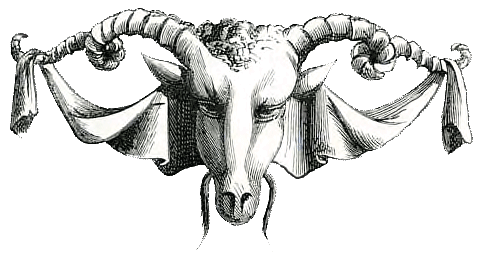
Continuing
Discover more from World4 Costume Culture History
Subscribe to get the latest posts sent to your email.

